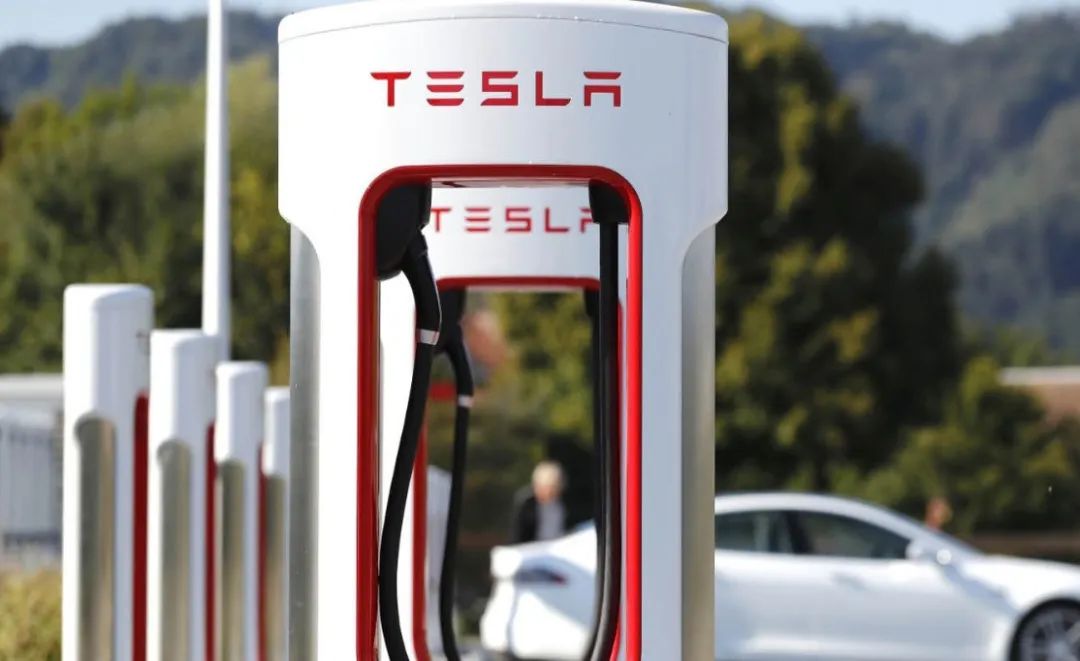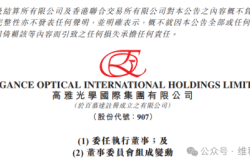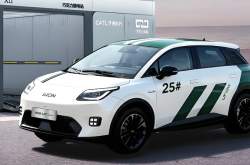Tesla's Ambitious Dreams Meet Three-Day Stock Slide: Is This an Ominous Sign?
![]() 01/02 2025
01/02 2025
![]() 594
594
"Where is Tesla's next engine for profit growth?"

Source | U.S. Stock Research Society
Tesla's stock price tumbled 3.3% overnight to $417.41, marking the third consecutive trading day of declines, with a near 5% drop on Friday. The three-day slide reflects heightened market concerns over sluggish sales and intensifying competition.
Breaking it down, the drop can be attributed to both broader market sentiment and Tesla-specific challenges, including waning sales, Elon Musk's shifting focus away from electric vehicles, fierce market competition, and the time needed for autonomous driving implementation.
Behind the 'three-day plunge',
Is market sentiment the 'culprit'?
Recently, Musk has faced numerous challenges, from regulatory scrutiny to fluctuations in his status as the world's wealthiest individual.
A deeper dive reveals that Tesla's recent stock decline is more influenced by overall market sentiment. As the year winds down, investor confidence is generally low, with nearly all 30 stocks in the Dow Jones Industrial Average trending downward.
Additionally, investors are concerned that the Federal Reserve's 2025 interest rate cuts might fall short of expectations, as lower rates are expected to boost the economy and make new car purchases more affordable.
According to FactSet data, analyst Toby Shek has set an average target price of approximately $296 for Tesla stock, significantly lower than its current price. This discrepancy raises investor concerns about potential overvaluation.
Tesla will announce its fourth-quarter delivery data on Thursday. Analysts predict deliveries of about 510,000 vehicles, slightly below the company's target of 515,000. For 2024, analysts anticipate total deliveries to remain around 1.8 million, the same as in 2023, suggesting a possible slowdown in Tesla's growth momentum.
Sales in Tesla's key markets have all declined. Cox Automotive estimates that Tesla's U.S. sales will drop by about 6% in 2024 to 633,000 vehicles, accounting for just 4% of the overall automotive market. Sales in the EU and China have also shown a downward trend.
As other automakers introduce more electric vehicle models, Tesla has inevitably lost some market share. In China, BYD has emerged as a strong competitor; in Europe, Volkswagen and BMW pose challenges; and in the U.S., automakers like General Motors and Ford are keeping a close watch.
Notably, despite a 25% year-over-year growth in the global electric vehicle market, Tesla's sales have declined. According to Rho Motion, Tesla's sales showed a downward trend in the global electric vehicle market as of November.
Since the launch of the Model Y in 2020, Tesla has not introduced any new models, with the Cybertruck being the only significant exception. While investors eagerly await a potential $25,000 Tesla model, the company has yet to unveil a prototype or provide more details.
Investors hold high hopes for Tesla's progress in autonomous driving, but most analysts believe widespread autonomous taxi use is still years away.
Despite the challenges of declining sales and intensifying competition, investors remain optimistic about Tesla's long-term prospects. Advancements in autonomous driving technology and potential policy support could drive Tesla's future growth.
However, the successful launch of Tesla's anticipated low-cost model and how Musk balances his multiple roles will be crucial factors influencing the company's future.
Although Tesla's new ventures are popular,
The current stock price has 'overspent' on the future
Tesla's electric vehicle business has faced multiple challenges in recent years, including slowing demand, reduced government subsidies, and heightened market competition, collectively slowing revenue growth.
Despite a 5% year-over-year sales increase in the third quarter of 2024, electric vehicle revenue for the first three quarters declined by 3% year-over-year.
To assess Tesla's electric vehicle business value, analysts estimate, under a base-case scenario, that the business will achieve 10% annual revenue growth by 2030, maintaining a 15% net profit margin.
This growth expectation is relatively optimistic. Analysts believe that even if the Trump administration eliminates the $7,500 electric vehicle tax credit, Tesla's leading market position may insulate it from significant policy impact compared to newer entrants.
Additionally, Tesla's planned new compact electric vehicle, the Model Q, is expected to further boost revenue growth.
Using a target P/E ratio multiple of 15, analysts consider Tesla's electric vehicle business to have a reasonable premium compared to the industry average P/E ratio of 11.
Based on these assumptions, analysts predict Tesla's electric vehicle business will be worth $354 billion by 2030. In a bull-market scenario, with a 15% annual revenue growth rate, the valuation jumps to $462 billion.
Meanwhile, Tesla's energy storage business is experiencing robust growth, fueled by strong demand for its Megapack and Powerwall products.
In the third quarter of 2024, energy storage revenue surged 52% year-over-year, with profit margins hitting a record high of 31%. Analysts predict continued growth with new product launches and factory commissions.
To value the energy storage business, analysts assume an annual revenue growth rate of 30%, a net profit margin of 20%, and a target P/E ratio multiple of 30.
Based on these assumptions, analysts estimate Tesla's energy storage business will be worth $245 billion by 2030. In a bull-market scenario, this value could reach $307 billion.
Combining Tesla's existing automotive and energy storage businesses, analysts estimate a total value of $599 billion. Adding factors like cash and reduced debt, Tesla's fair value is $619 billion.
This valuation is notably lower than the current market price, indicating the market's high optimism for Tesla's new ventures, such as Robotaxi, FSD, and the Humanoid robot.
Analysts also used the DCF model to value Tesla, assuming a 15% free cash flow growth rate, a 3% terminal growth rate, and a 10% WACC, resulting in a 2030 target price of $185 per share. Both the SOTP and DCF valuations suggest the current stock price fully reflects market optimism about Tesla's new ventures.
Tesla's next
profit growth 'engine'?
Elon Musk's launch of the Cybercab autonomous taxi business in October 2024 piqued investor interest. This enthusiasm intensified after Trump's presidential election victory, as the market anticipated regulatory easing due to Musk and Trump's close relationship.
During Tesla's third-quarter 2024 earnings call, Musk revealed that if approved by regulators, small Cybercabs would be deployed in Texas in 2025, with potential expansion in California. He expects mass production to begin in 2027, targeting annual production of 2 to 4 million vehicles.
However, analysts note that this production target is extremely ambitious, as Waymo, a Google-backed autonomous ride-hailing competitor, has only operated 700 autonomous vehicles since its 2018 launch.
To assess Tesla's autonomous taxi business potential, analysts adopted a conservative approach, assuming an average annual production of 100,000 vehicles by 2030. This prediction suggests 600,000 autonomous taxis on the road by 2030, generating an estimated $105 billion in revenue.
Considering the autonomous nature of Tesla's taxis, analysts believe they should enjoy a higher net profit margin than traditional ride-hailing services. Using a 15% net profit margin and a P/E ratio of 30, the business is valued at $473 billion. In a bull-market scenario, with annual production reaching 150,000 vehicles, the valuation rises to $709 billion.
Tesla's Full Self-Driving (FSD) capability is also a focus for analysts. According to third-party data, as of the third quarter of 2022, 15% of Tesla's electric vehicles were equipped with FSD.
While the latest data is unavailable, this provides a reference for FSD adoption rates. Tesla reduced the FSD feature price from $199 to $99 per month to attract more customers.
Analysts predict that by 2030, the FSD adoption rate will gradually increase to 20%, generating $4.6 billion in revenue for Tesla. Using a 30% net profit margin and a target P/E ratio of 50, the FSD valuation is $68 billion. In a bull-market scenario, with a 30% adoption rate, the value rises to $102 billion.
Regarding Tesla's humanoid robot, Optimus, analysts believe it has the potential to revolutionize the market but will take time to become a significant growth driver. Optimus aims to be an affordable product for the masses, with a target price below $20,000.
However, analysts note that while this price may be feasible for commercial applications, it is still expensive for most households. Therefore, there is high uncertainty regarding Optimus's launch scale and demand intensity.
Analysts predict that by 2030, Optimus will ship 182,000 units, generating $3.6 billion in revenue for Tesla. Using a 15% net profit margin and a target P/E ratio of 50, the business valuation is $27 billion. In a bull-market scenario, with double shipments, the valuation rises to $55 billion.
Despite analysts' optimistic assumptions about new ventures, the overall valuation still suggests Tesla's fair value is lower than the current market price. Analysts believe the current valuation reflects significant optimism about FSD, autonomous taxis, and the humanoid robot, indicating that Tesla remains overvalued.





